Then And Now: The Towns Of The Wild, Wild West
In the 19th and early 20th century, the people of the United States turned their attention to the western United States. Many saw the West as a place for economic opportunity, freedom, and land ownership, and they began migrating there. This period in history is referred to as the Old West or the Wild West. The era is often associated with saloons, gunslingers, outlaws, Indians, and lots of mining. During the expansion West, many towns and mining camps were established with some even growing into major cities. While some of the towns were forgotten and abandoned, others withstood the test of time and are still around today. Read on to see what some of these towns looked like back in the Old West and what they look like today.
Tombstone, Arizona

Located in Tombstone, Arizona, The OK Corral is remembered for being the location of one of the most famous gunfights in the Wild West. It took place on October 26, 1881, and was a 30-second shootout between lawmen and a group of outlaws that called themselves the Cowboys.
The gunfight was the result of a long-time feud after the three Earp brothers, all lawmen, continuously received death threats from members of the Cowboys.The shootout resulted in the deaths of members of both sides as well as numerous life-threatening injuries to others. The fight was the result of a time when outlaws could run free with limited lawmen who were able to control them over such large areas.
Time Stands Still In Tombstone

Today, the Wild West town of Tombstone is a historic complex open every day from 9 am to 5 pm except for on Thanksgiving and Christmas. There are three gunfight reenactments per day as well as a variety of other shows guests can purchase tickets to watch.
There are also several museums and establishments designed replicate what the town would have looked like back during the time of the legendary gunfight in 1881. In addition, there is free admission into the 1880s museum of Arizona's oldest newspaper The Epitaph, where you can read the original reports of the gunfight and see how the newspaper was made on the original Washington hand press.
Deadwood, South Dakota

Deadwood is a city in South Dakota located in Lawrence County. The town is named after the dead trees that can be found in its region. After the discovery of gold in the southern Black Hills in 1874, the Black Hills Gold Rush began and miners began to move into the area, where they found a gulch full of dead trees and a stream that was full of gold. Deadwood was born.
The city played by its own rules, which attracted outlaws, gamblers, gold seekers, and all manners of people. Many now-famous outlaws made a name for themselves her such as Calamity Jane, Wild Bill Hickok, and Potatoe Creek Johnny.
Deadwood Today

Since the town's inception, it has managed to survive three major fires that almost left it to become just another Old West ghost town. Luckily, the town wasn't ever critically damaged and the legalization of limited-wage gambling in 1989 helped completely bring the town back to life.
Now, Deadwood is booming, with modern-day casinos, hotels, restaurants, and more. The town also is known for keeping its Gold Rush-era look packed with museums, re-enactments, arts, historical tours, and more.
Deadwood (TV Series)
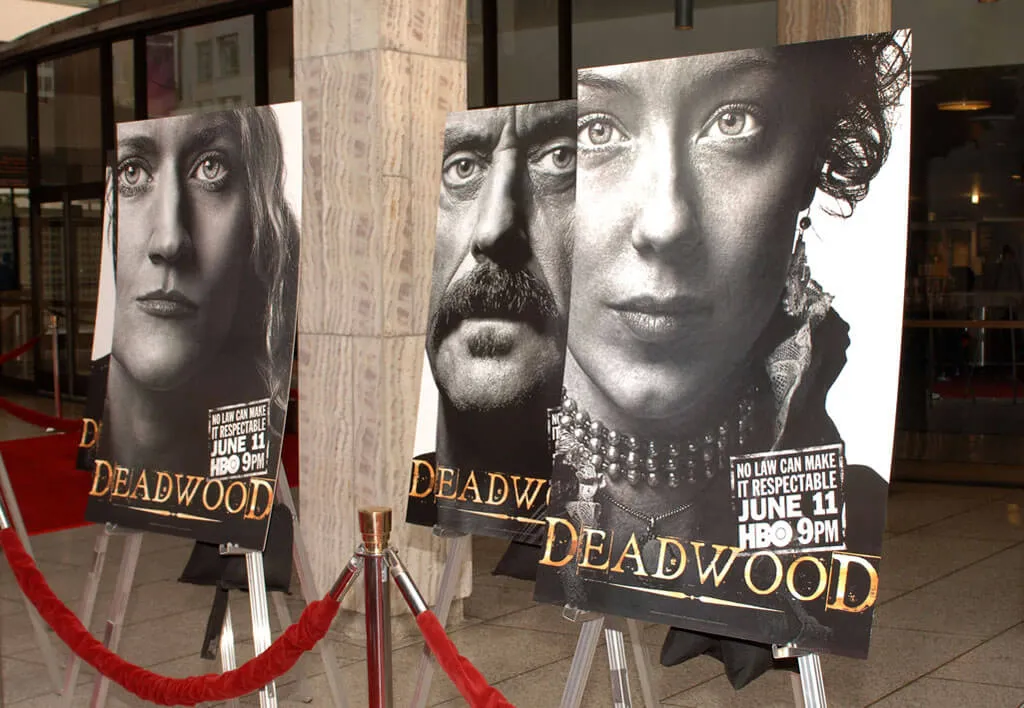
Deadwood was an HBO American Western series that was created by David Milch. It aired on March 21, 2004, to August 27, 2006, with 36 episodes over three seasons. The series was set in the 1870s during the establishment of Deadwood, South Dakota.
The show covers the growth of the area from a camp to a town with an ensemble cast who play true historical figures, although the plotlines are a mix of historical and fictional material. The creators utilized real diaries and newspapers from people that lived in Deadwood at the time as reference points for characters, events, and the all-around believability of the show.
Cripple Creek, Colorado
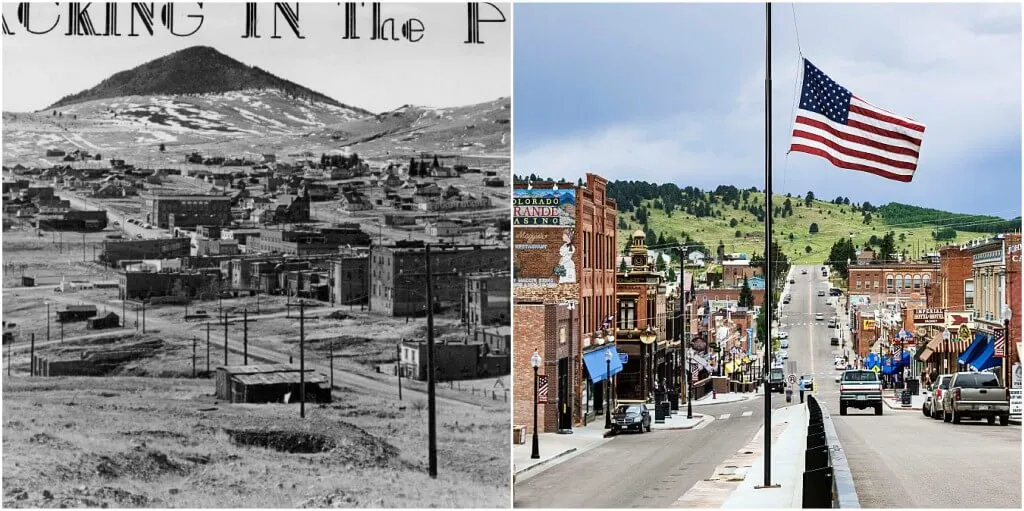
Cripple Creek, Colorado is located on the southwest slopes of Majestic Peak in the Colorado Rockies. Originally, before 1890, the land was considered to be no more than a cattle pasture. However, during the Colorado Gold Rush, the community attracted thousands of gold miners and the population grew from five hundred to ten thousand in just three years.
In 1986, Cripple Creek had two disastrous fires in a span of four months so the most historic buildings only date back to 1896. Although by 1900 Cripple Creek was an established mining community, it would later be described as a ghost town until gambling was legalized in 1991. This saved the city.
A Gambling Town More Than A Mining Town
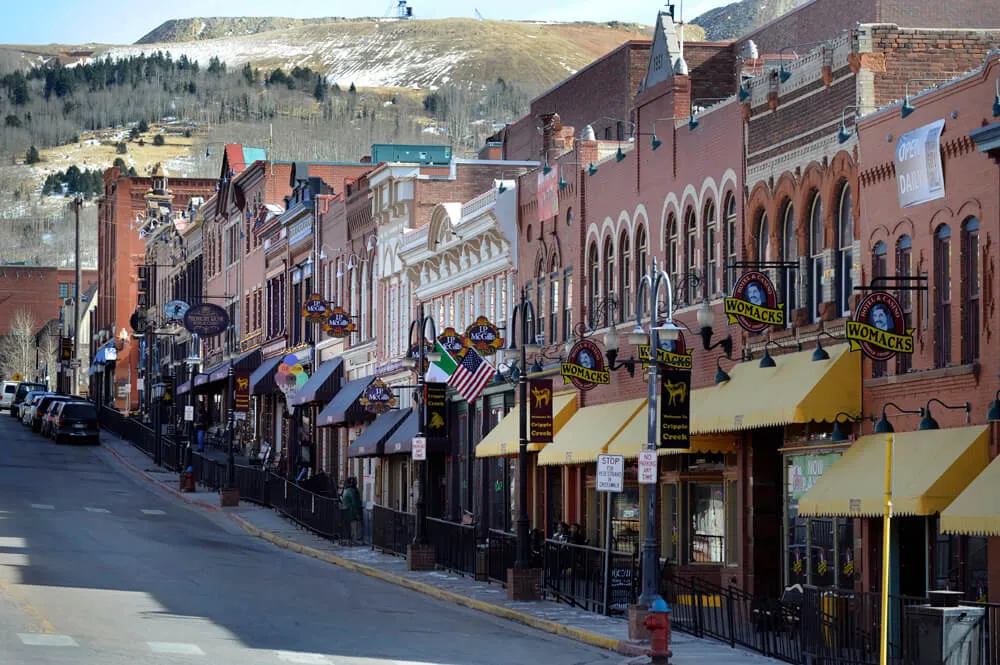
Today, Cripple Creek is a thriving own where casinos occupy many historic buildings. Casinos and gambling have successfully managed to bring the city back to life. It has also become a popular tourist destination with access to outdoor activities, events such as doney races vintage car shows, sightseeing, and more.
For those looking to having a more historical experience, there are tours of the gold mines, trips on the Cripple Creek Narrow Gauge Railroad, the District Museum, the Jail Museum, and numerous other activities centered around the city's rich past. You could also spend your time gambling on the main street, surrounded by historical architecture, or catching a show at the Butte Theatre.
San Francisco, California

Many people tend to forget that San Francisco was built during the days of the Old West. The California Gold Rush started in 1848 which led to a massive migration of Americans to the West. In January 1848, the population of San Francisco was 1,000 and by December 1849, it had risen to 25,000. The population and the city continued to grow rapidly throughout the 1850s and 60s which complicated city plans and led to the traffic problems that haunt San Francisco today.
It wasn't long until San Francisco became the largest city west of the Mississippi with many of the "robber barons" at the time settling in the city. While still developing, the city was chaotic and full of corruption and violence, and bursting at the seams with people all trying to make it rich. Since then, it seems to have mellowed out a little bit.
San Francisco Turned Modern

Since the time of the Old West and the California Gold Rush, San Francisco hasn't really stopped growing. At this point, San Francisco is the cultural, commercial, and financial hub for the entirety of Northern California. It covers an area of 46.9 square miles and is the fourth most populated city in California and the thirteenth most populated in the United States.
Over the years, San Francisco has become a major tourist location known for its location-specific architecture, rolling hills, dense population, and all-around culture. It is also the headquarters for many financial companies and businesses such as Yelp, Twitter, Uber, Craigslist. It is also one of the highest desired places to live among millennials.
Dodge City, Kansas
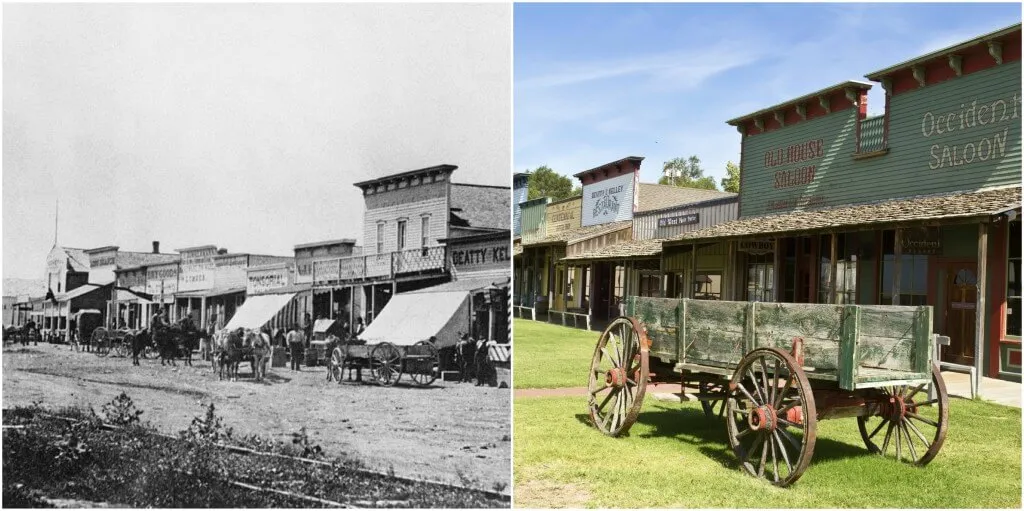
Dodge City is located in the county of Ford in Kansas. Originally named Fort Mann, it was built in 1847 to provide protection for travelers on the Santa Fe Trail. However, Fort Mann collapsed due to an Indian attack in 1848 and remained abandoned until the end of the Civil War. During the Indian Wards in April 1865, Dodge City was built and became a stopping point for travelers.
Eventually, it became and gained a reputation as a true settlement frontier of the Old West. At one point it had more gunfighters, saloons, gambling halls, and brothels than anywhere in the West which attracted quite a crowd. Eventually, Dodge City quieted down and became a rather sleepy town compared to its heyday during the Old West.
Remembering Fort Dodge
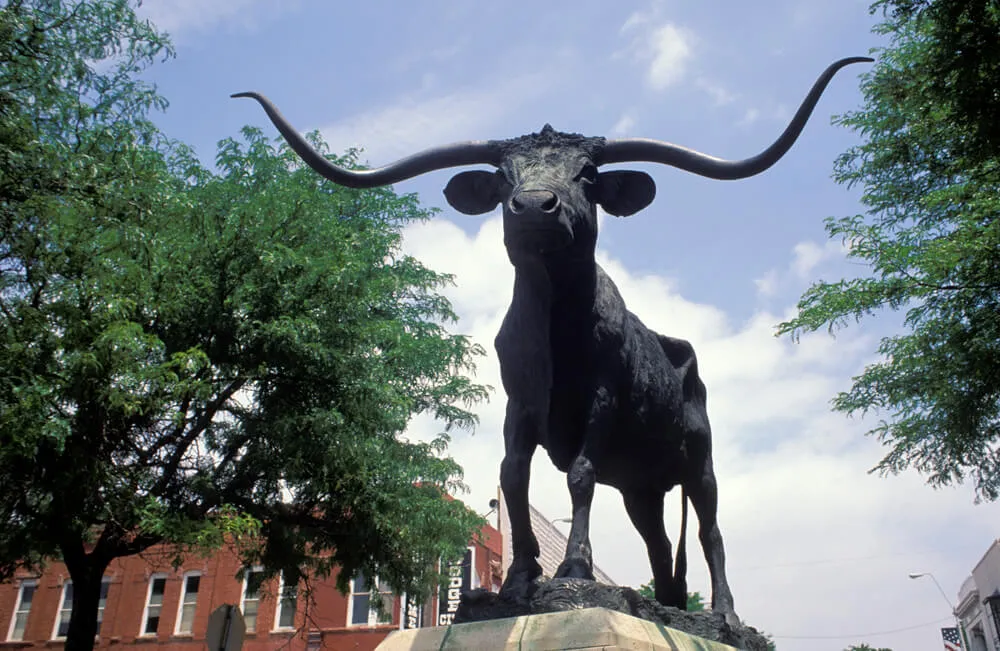
Fort Dodge eventually closed in 1882 and by 1886, the major cattle drives had ended which had essentially built the city from the ground up. Although the days of gunfights and the true Wild West were over in Dodge City, it didn't mean that the city was forgotten. Dodge City has since managed to preserve its history and heritage and still thrives as a successful community.
By the end of the 19th century, Dodge City's reputation had sparked a series of books, films, nickelodeons, and television shows. This made the city a hotspot for visitors and there are now more than 100,000 tourists that come each year to walk around, visit the boot Museum, the reconstruction of the Front Street, and more.
Santa Fe, New Mexico

Although Santa Fe was originally occupied by the indigenous people that called the city home, it also played a massive role in the development of the West. It is the oldest city in the state of New Mexico and is the oldest capital in the United States. After changing hands numerous times, the United States acquired New Mexico in the Treaty of Guadalupe Hidalgo.
It then played a role in the Civil War and the founding of the Santa Fe National Cemetery. As the railroads began to extend West, Santa Fe was assumed to become an important stop but it was bypassed. Although it appeared to be suffering as a city, in the early 20th century, Santa Fe became an important place for writers and artists alike.
Santa Fe Is Alive And Thriving

Since the 19th century, Santa Fe has made huge strides to ensure its survival. In the early 20th century, many people sought Santa Fe's climate as a cure for tuberculosis, and the opening of the New Mexico Museum of Art opening helped to make the city unique.
In 1926, the Old Santa Fe Association was established to "preserve and maintain ancient landmarks, historical structures, and the traditions of Old Santa Fe." Now, Santa Fe is recognized as being one of the most interesting urban areas in the United States. The old historic pueblo-style buildings along with its appreciation for the past has made it a tourism hotspot and a diverse place to visit.
Virginia City, Nevada
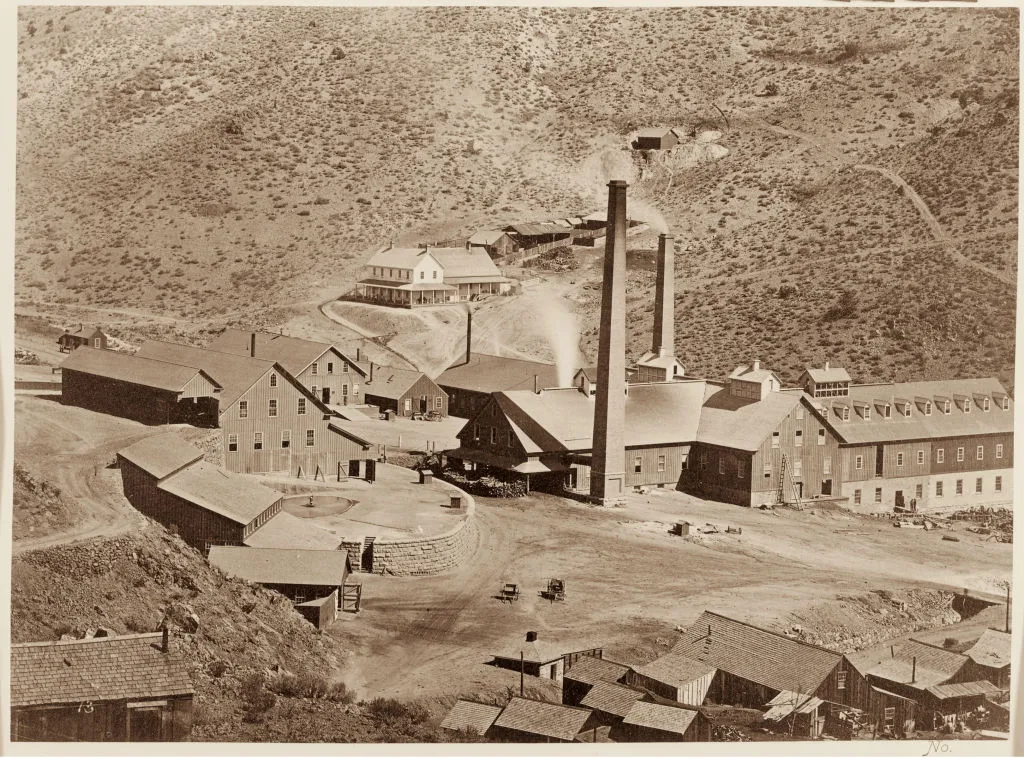
Due to the mining frenzy in the 19th century, Virginia City, Nevada became the most important industrial city between Denver and San Francisco. The success of the city led those who settled down there to build mansions, opera houses, hotels, schools, and everything in between.
The city sprang up after the discovery of the Comstock Lode, one of the nation's first major silver deposit discoveries and like most mining boomtowns, it developed practically overnight. At its peak, it had a population of 25,000 which quickly declined as soon as the mines became depleted.
Virginia City Is A Famous Tourist Location

Today, Virginia City keeps its historic look with many of the board sidewalks and historic buildings being restored, making it a very popular tourist destination. There are numerous museums and attractions such as the Bucket of Blood Saloon and the Suicide Table, with Piper's Opera House open as one of the main attractions.
There are also events such as The Devil Made Me Do It Saloon Crawl and various historical reenactments. Although its population is very small, Virginia City makes enough money through tourism to keep it alive and frequently visited. Its mining area was also designated as a National Historic Landmark, which has helped it keep its historic look and feel.
Oatman, Arizona
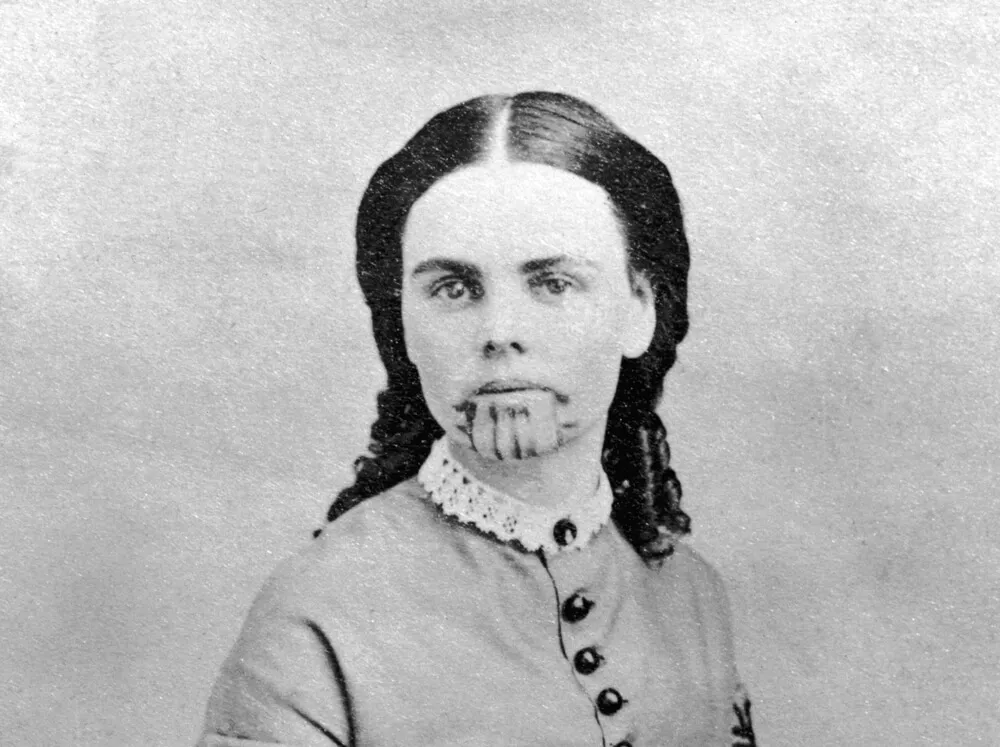
Oatman is located in the Black Mountains of Mohave County, Arizona. It started as a small mining camp until two prospectors had a $10 million gold find, although the area had already been established for years. After the gold discovery, Oatman's population grew by 3,500 in under a year.
The name "Oatman" was chosen to posthumously honor Olive Oatman, a young girl who had been abducted by Indians in 1851 and forced into slavery. She was later traded to the Mohave Indians who adopted her as a daughter but had her face tattooed as was the tradition of the tribe. She was eventually released in 1856 at Fort Yuma, Arizona and died in 1903.
Oatman Survived Thanks To Route 66
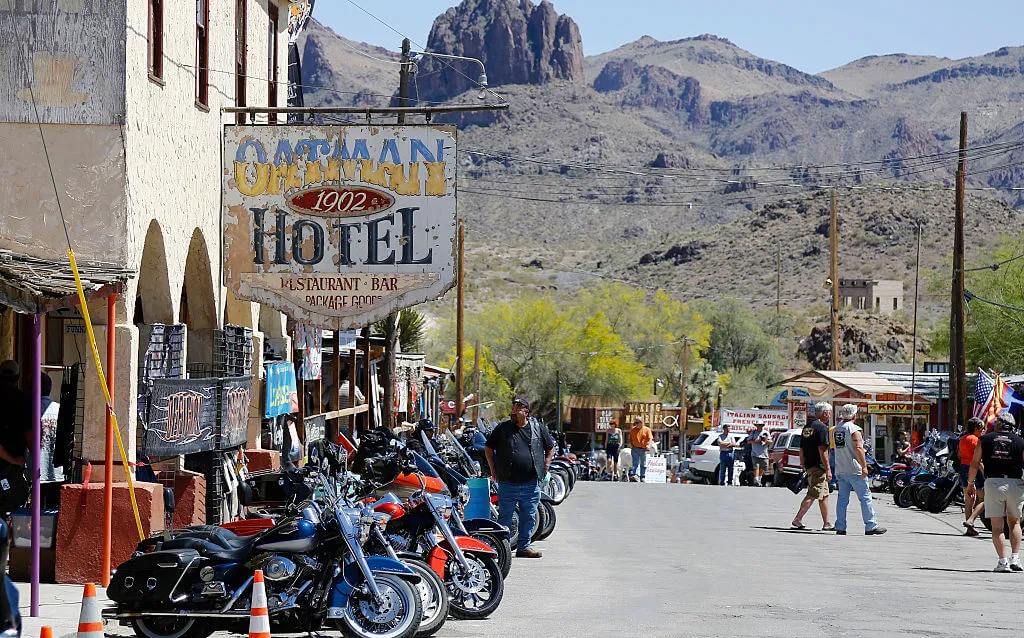
In 1941, the remainder of the town's mining operation was forced to be shut down by the government. Luckily, it was located near the busy Route 66 and was in the middle of the route for travelers making their way between Kingsman and Needles, California. So the town was fashioned for travelers and did relatively well for itself.
However, this soon ended in 1953 after a new route was built. Oatman was abandoned by 1960. Yet, due to a newfound fascination with the old Route 66 Oatman has become a typical spot on the scenic route. It is now frequently visited by tourists who come to see the wild burros roaming the streets, Wild West shootout reenactments, and many other attractions.
San Xavier del Bac Mission

The San Xavier Mission was founded as a Catholic mission by Father Eusebio Kino in 1692. The construction of the currently-standing church was started in 1783 and was completed in 1797. Following the Mexican independence in 1821, San Xavier became part of Mexico but was regained by the United States with the Gadsden Purchase of 1854.
The mission is located nine miles south of downtown Tuscon and is considered to be the oldest Catholic church in the United States, still active after 300 years. The church known as the "White Dove in the Desert" and still holds mass for its parishioners.
San Xavier Is Still Fully Functional

Today, the mission is still used for its original purposes and is a fully-functional church. The Mission Church is open to the public from 7 am to 5 pm daily with a gift shop now included in the building. There is also a museum that includes a walkthrough of the church and a video that describes the church's history and the restoration of the mission.
Although the public is welcome to attend masses, marriages, baptisms, etc. are reserved for the local community. The mission was created in order to serve the local community on the Tohono O'odham Reservation and many believe that it should stay that way for the most part and that the holy sacrament should remain reserved for members of the community.
Cody, Wyoming
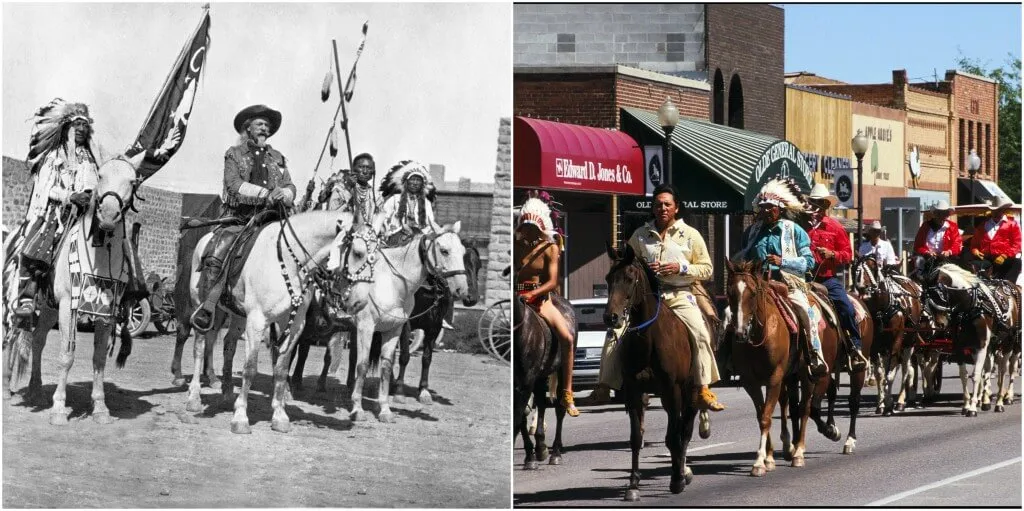
Cody is a city located in Northwest Wyoming that was named after one of the Old West's biggest legends: Colonel William Frederick "Buffalo Bill" Cody. The town was named after him because he played a major part in the creation of the original town. He was impressed with the development possibilities of the town regarding its irrigation, soil, scenery, and proximity to Yellowstone. So, in the mid-1890s, he decided to build a town. During the times of the Old West, Cody was the very definition of a "Wild West" town.
Today, Cody has kept many of the things that give it a truly Western charm. Many of the buildings kept the same architectural style and even the people look like they haven't ever left the 1890s. Although there is a tourist aspect to the town, for the most part it is just a town stuck in time.









